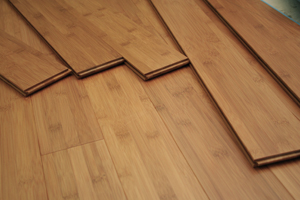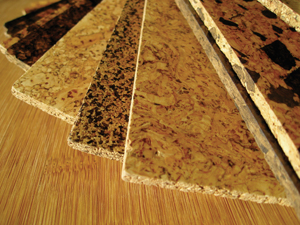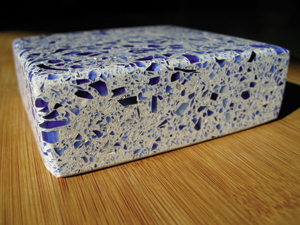T he word “green” has joined the ranks of popular catchwords such as “natural,” “organic,” and “light.” It is used in advertising products and services to make consumers feel good about their purchases. Some companies are guilty of “greenwashing,” meaning they make unsubstantiated claims about the environmental benefits of the product that may be misleading, unverified, or untrue. It is up to the consumer to ask questions like those posed by Brian Milani in “Building Materials for a Green Economy” (www.greeneconomics.net):
he word “green” has joined the ranks of popular catchwords such as “natural,” “organic,” and “light.” It is used in advertising products and services to make consumers feel good about their purchases. Some companies are guilty of “greenwashing,” meaning they make unsubstantiated claims about the environmental benefits of the product that may be misleading, unverified, or untrue. It is up to the consumer to ask questions like those posed by Brian Milani in “Building Materials for a Green Economy” (www.greeneconomics.net):
 he word “green” has joined the ranks of popular catchwords such as “natural,” “organic,” and “light.” It is used in advertising products and services to make consumers feel good about their purchases. Some companies are guilty of “greenwashing,” meaning they make unsubstantiated claims about the environmental benefits of the product that may be misleading, unverified, or untrue. It is up to the consumer to ask questions like those posed by Brian Milani in “Building Materials for a Green Economy” (www.greeneconomics.net):
he word “green” has joined the ranks of popular catchwords such as “natural,” “organic,” and “light.” It is used in advertising products and services to make consumers feel good about their purchases. Some companies are guilty of “greenwashing,” meaning they make unsubstantiated claims about the environmental benefits of the product that may be misleading, unverified, or untrue. It is up to the consumer to ask questions like those posed by Brian Milani in “Building Materials for a Green Economy” (www.greeneconomics.net):• How much energy was used to produce and transport the product?
• What kinds of energy resources were used to produce it?
• What pollution or waste did it generate?
• Were local resources used, especially underused ones?
• Is the product reused or recycled?
• Can it be reused or recycled?
• Is it durable and maintenance free?
• How well does the product perform?
• How does it affect indoor air quality?
By choosing to build a log home, you have taken the first step toward living green. When compared to conventional, “stick-built” homes, log homes require less time, processing, and handling to construct. There is no waste when cutting down trees because only prime timber is selected. Most log home producers are involved in reforestation programs in which all parts of the tree are used and more trees are planted than cut. The companies also use only certified wood from sustainably managed forests. Log homes rely on gravity rather than metal fasteners as the building settles. Unlike conventionally built homes, a log home’s energy efficiency increases when it settles. Logs absorb heat energy during the day and radiate it at night. According to the U.S. Department of Energy, solid wood homes save 45 percent on heating and 24 percent on cooling over stick-built homes. A log home can also be deconstructed and its building materials recycled—but not before it has been around for 100 years or more! Interior log walls are “surface as finish,” meaning they do not require additional finishing that may affect interior air quality. If you do decide to finish the interior, look for low or no VOC stains or sealants.
With your green shell in place, where else can you use green building materials to finish your living space?
 Let’s start at the top: the roof. Begin by researching Energy Star-rated roofing. One option is metal roofing that has been produced using recycled steel. It is long-lasting and low maintenance and has a high solar reflectance (50 percent as compared to 20 percent for asphalt shingles). A metal roof may cost considerably more than a standard roof, but you won’t have to replace it for decades. If metal is not in your budget, the U.S. Environmental Protection Agency recommends using a light-colored material with high reflectance and emissivity; the EPA estimates that a light-colored roof will stay up to 70 degrees cooler than a dark roof in hot weather.
Let’s start at the top: the roof. Begin by researching Energy Star-rated roofing. One option is metal roofing that has been produced using recycled steel. It is long-lasting and low maintenance and has a high solar reflectance (50 percent as compared to 20 percent for asphalt shingles). A metal roof may cost considerably more than a standard roof, but you won’t have to replace it for decades. If metal is not in your budget, the U.S. Environmental Protection Agency recommends using a light-colored material with high reflectance and emissivity; the EPA estimates that a light-colored roof will stay up to 70 degrees cooler than a dark roof in hot weather.Your log walls provide great insulation from the elements, but if there are areas in you home that will be built conventionally, such as dormers, and require insulation, consider such green options as cellulose, mineral wool, soy foam, or recycled cotton/denim. And if you plan to use drywall in some areas, look for a brand made of recycled paper and post-industrial gypsum.
Kitchens and bathrooms are ideal areas for green products. Many cabinets are made from particle board, hardwood, plywood paneling, or MDF and are glued together with a formaldehyde-based adhesive that contains VOCs (Voluble Organic Compounds), which emit chemicals. The EPA recommends cabinets made from natural or sustainably harvested wood, certified locally grown woods, or salvaged cabinets that have been refurbished. Make sure the cabinets are finished with nontoxic substances; avoid the use of polyurethane, which is known to cause or aggravate asthma. The green options for countertops are endless. Consider recycled metal or glass (one company takes crushed plate glass from demolished commercial buildings and mixes it with resin and concrete with outstanding results), paper, natural stone, or reclaimed woods. Again, make sure the adhesive and sealant are VOC-free. For decorative tile for the bathroom or kitchen backsplash, look for companies that offer recycled options.
 Flooring is another place to raise your green flag. Reclaimed wood will be more costly, but it has the texture and patina to complement your log walls. If you opt for a more cost-effective wood floor, the best green choice is certified hardwood instead of one of the noncertified tropical/exotic woods that are so popular today. Bamboo is being touted as the best green flooring choice for the environmentally conscious. Some bamboo flooring is green, but some manufacturers have “greenwashed” their claims. The bamboo may be exported and transported from a long way away. The strips are often sealed with formaldehyde-based chemicals. In some cases, bamboo crops have displaced forested areas. Before you buy, do your research on bamboo flooring and ask lots of questions about its origin and finish. Cork is a popular choice for kitchens these days. It is soft on the feet and comes in a variety of warm, natural tones. Cork is harvested as bark, which the tree is able to regenerate. Ceramic tile is a durable and low-maintenance alternative to hardwoods. Some types are made from 100 percent recycled materials. A budget-conscious consumer may look at vinyl flooring as a viable choice, but vinyl is produced with hazardous and toxic substances. The green choice would be linoleum, which is made from sawdust and linseed oil. It is durable and low maintenance and comes in the same variety of colors, patterns, and textures as vinyl. Whatever flooring choice you make, don’t overlook the adhesives and sealants required to install it.
Flooring is another place to raise your green flag. Reclaimed wood will be more costly, but it has the texture and patina to complement your log walls. If you opt for a more cost-effective wood floor, the best green choice is certified hardwood instead of one of the noncertified tropical/exotic woods that are so popular today. Bamboo is being touted as the best green flooring choice for the environmentally conscious. Some bamboo flooring is green, but some manufacturers have “greenwashed” their claims. The bamboo may be exported and transported from a long way away. The strips are often sealed with formaldehyde-based chemicals. In some cases, bamboo crops have displaced forested areas. Before you buy, do your research on bamboo flooring and ask lots of questions about its origin and finish. Cork is a popular choice for kitchens these days. It is soft on the feet and comes in a variety of warm, natural tones. Cork is harvested as bark, which the tree is able to regenerate. Ceramic tile is a durable and low-maintenance alternative to hardwoods. Some types are made from 100 percent recycled materials. A budget-conscious consumer may look at vinyl flooring as a viable choice, but vinyl is produced with hazardous and toxic substances. The green choice would be linoleum, which is made from sawdust and linseed oil. It is durable and low maintenance and comes in the same variety of colors, patterns, and textures as vinyl. Whatever flooring choice you make, don’t overlook the adhesives and sealants required to install it.This brief overview of green building materials is designed to inspire you to look for environmentally safe options for your new log home. It’s up to you to do the research, ask the right questions, and read the labels carefully. Just because a label says the product is green doesn’t mean that it is. The green products you incorporate into your home will not only be beautiful but will provide you with a clean and healthy living space.
